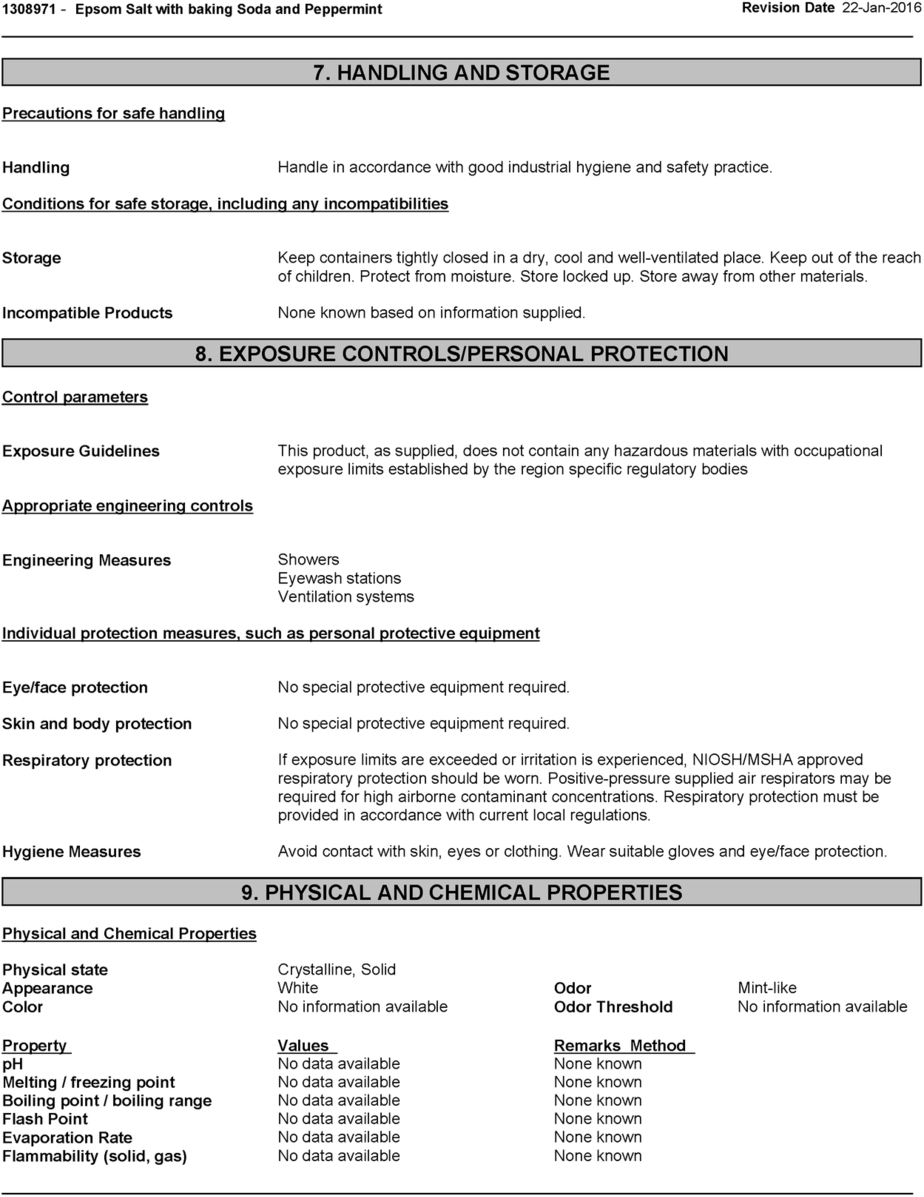1.5.1: Applying Properties - MSDS/SDS
- Page ID
- 204158
What is a MSDS/SDS?
A Material Safety Data Sheet (MSDS) or Safety Data Sheet (SDS) is designed to provide both workers and emergency personnel with the proper procedures for handling or working with a particular substance. MSDS's include information such as physical data (melting point, boiling point, flash point etc.), toxicity, health effects, first aid, reactivity, storage, disposal, protective equipment, and spill/leak procedures. These are of particular use if a spill or other accident occurs.
The MSDS's are available from many sources such as the chemistry store, health and safety offices, material producing companies etc. Any business or industry that has chemicals on site is required to have access to MSDS files for employers to be able to access at any time. If an employee is concerned about their exposure to chemicals, they can persuse a MSDS to obtain helpful information. Likewise, one could research household chemicals that could be dangerous to humans and animals. Many substances found around the home (pesticides, fuels, and cleaners) can be hazardous or harmless.
A partial MSDS of magnesium sulfate (bath salts used for soaking that are not illegal substances is illustrated below. This particular page only shows chemical and physical properties of this substance. This would give one an idea of what magnesium sulfate looks like and how it should react to other substances.

Other Terms Used in MSDS/SDS
Aspects of toxicity and how chemicals will affect a body can also be found in this resource. Along with physical and chemical properties, you should be familiar with the terms below that could also be found in a MSDS/SDS document.
- Mutagen: able to alter DNA and could result in carcinogenesis (chemical example would be nitrosamine)
- Carcinogen: able to cause cancer (this can get complicated, animal and human carcinogens both exist). There are very few chemicals classified as being human carcinogens. (benzene, radon, asbestos)
- Neurotoxin: affects the nervous system (chemical examples include lead and mercury)

- Teratogen: affects developing fetus or embryo (pharmaceutical example would be thalidomide)
- Corrosive: can chemically destroy things easily (acids/bases are examples)
- Flammable/Combustible: able to catch on fire (examples would include gasoline and acetone)
- Volatile: a liquid that can transform to a gas easily (examples would include gasoline and acetone)
MSDS/SDS's can be several pages long. A complete MSDS/SDS guide for acetic acid (also known as vinegar) can be viewed by clicking on this here. Although this chemical might appear dangerous, it used in the production of vinegar, ketchup, and barbeque sauce. After looking over vinegar's entire MSDS/SDS sheet, write down any questions for your instructor regarding unfamiliar terminology.
Exercise \(\PageIndex{1}\)
After looking at the MSDS for acetic acid, answer the questions below:
- Is this chemical a mutagen?
- Does acetic acid react with metals?
- What odor does acetic acid produce?
- If this chemical is ingestion, should you induce vomiting to remove it from the body?
- Does this chemical have a color?
- Answer a
-
Acetic acid is not a mutagen. It will not alter DNA.
- Answer b
-
Acetic acid reacts with metals. This is a chemical property of this substance.
- Answer c
-
Acetic acid smells vinegar.
- Answer d
-
Acetic acid is very corrosive and will eat biological tissues. If swallowed, vomiting should not be induced.
- Answer e
-
This chemical is colorless
Contributors
Chung (Peter) Chieh (Professor Emeritus, Chemistry @ University of Waterloo)
- Hayden Cox (Furman University)


